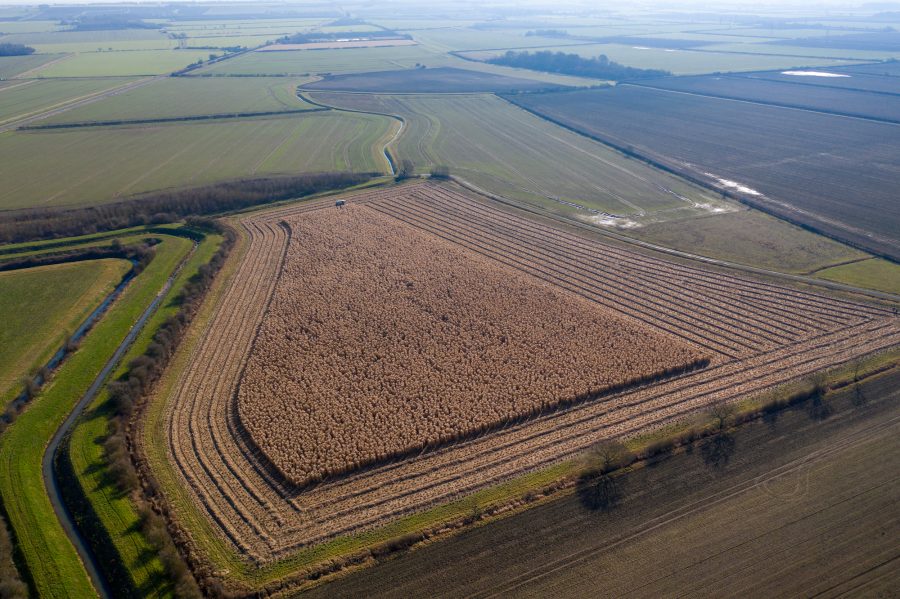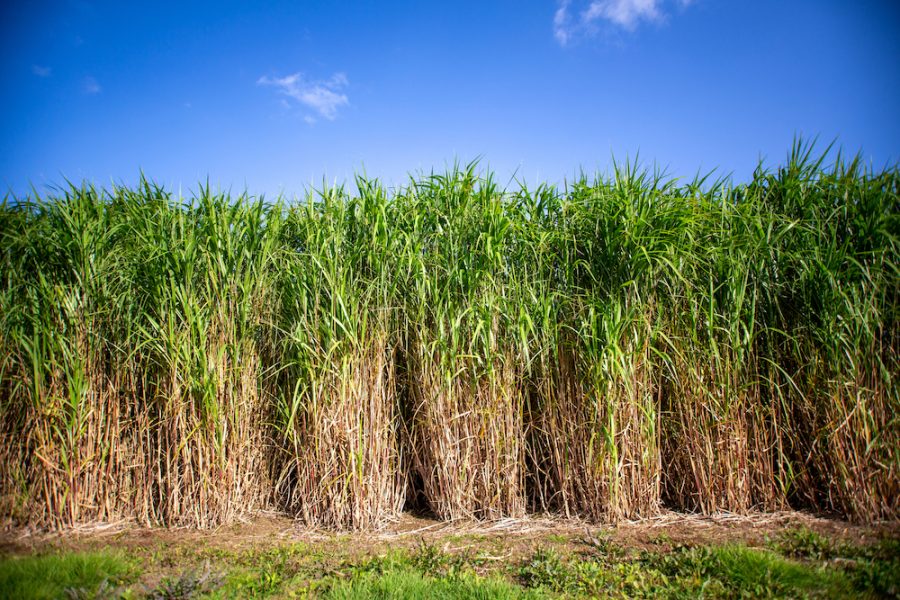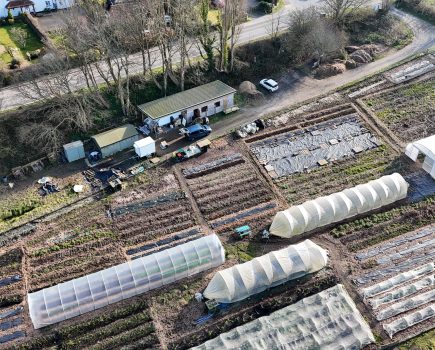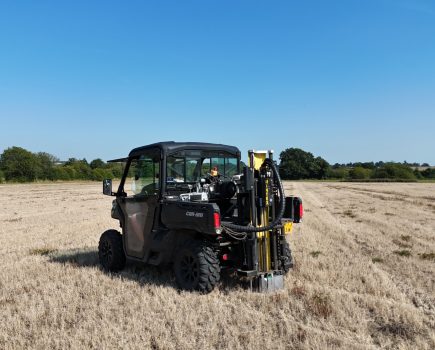Richard Shepherd-Barron investigates the benefits of a crop that needs minimal inputs, is ideal for poor soil or land which is prone to flooding and is in demand as a biofuel.
Miscanthus originated in South East Asia and was imported initially as a decorative grass for gardens; it’s sometimes known as ‘elephant grass’. However, its properties are such that it is an ideal source of energy for biofuel. It is also a sustainable solution for farmers and the environment as it contributes to improved soil, air and water health, boosts biodiversity and reduces fertiliser and pesticide use.
For farmers who have some poor soils, awkward small fields that do not take today’s large machinery easily, strangely shaped fields that could handle a crop to ‘square up’ the cultivated areas or land prone to flooding, the properties and value of miscanthus could well be attractive.
The demand for miscanthus as a highly sustainable and renewable crop is increasing as a result of the development of new raw material uses including UK heat and power generation. Growing to between three and four metres tall, this crop meets the industry’s requirements because it is fast growing, has a low mineral content and is high yielding.
The variety Miscanthus Giganteus is a non-invasive hybrid which is not capable of spreading through seed distribution. This, alongside its other environmental benefits, which include carbon capture in the soil and its ability to improve soil, makes it a compelling choice for farmland diversification as a long-term, environmentally friendly, low maintenance investment decision.
A survey carried out for the GCB Bioenergy Journal in 2022 showed that 94% of the farmers growing miscanthus reported benefits to their farm business. These farms had converted areas of their farms from a mix of arable and pasture land. The majority of those surveyed reported benefits in terms of improved profit margins due to reduced workload and lower labour, input and maintenance costs.
Soil erosion was improved on lighter, sandy soils and the reduced need for spraying was seen as environmentally helpful for land near water courses, recreation areas or housing. No spraying or fertiliser applications also means less run-off, which is highly important in a nitrogen-sensitive catchment.
There are no known diseases affecting the crop and almost no pests, while the rhizome returns nutrients to the soil. Some herbicides may be required during establishment, but very little thereafter. In autumn, as the leaves fall from the stems, there is a considerable return of nutrients from the decomposing leaf litter, which also helps to suppress weeds and conserve water, meaning no fertilisers are needed.
Currently, it seems that the best part of the UK for growing miscanthus is the southern UK, where it has delivered long-term, consistent income and environmental benefits on less productive lands. The wetter and warmer the area, the better the crop, which is now more affordable and profitable thanks to the sustainable farming incentive, which can provide payments from £5.80/ha up to £673/ha, depending on how the land is designated; the easiest option is £45/ha for no spraying.
Richard Hartley farms arable crops and pigs on 540 hectares near Witney, in Oxfordshire, and chose miscanthus as some of his land is split into small, awkward fields with poor access and poor drainage. He describes it as “hungry” land that is low in nutrients so hard to farm and high in input costs.
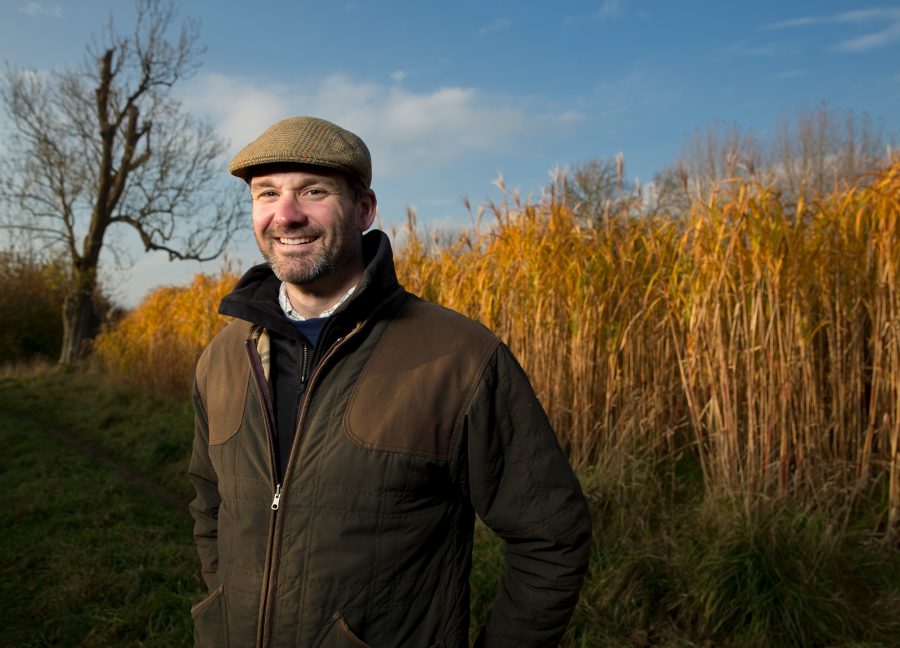
Richard Hartley
He said: “There have been poor results from combinable crops on these fields. Our machines are bigger nowadays for the rest of the farm and unmanageable in these small fields. It was very expensive land on which to grow wheat, but now fits into our farming plans and [miscanthus is] very worthwhile to grow with always pretty respectable results.
“We’ve found that miscanthus benefits us in lots of ways. It’s an energy crop with minimal inputs and while it’s a complete diversification for us, having miscanthus in fields where previously there were cereal crops has helped to protect us against poor cereal prices.“
Richard works with Terravesta, specialists in the miscanthus supply chain. They provide a professional and comprehensive support service to farmers, with individual cash flow modelling before planting, agronomic date and advice, specialised planting and soil cultivation equipment, successful planting protocols, high quality planting materials (the rhizomes) from Europe’s largest miscanthus nursery, drone surveys to measure establishment success, specialist logistics services and software and long-term, index-linked purchase contracts.
Over the years Terravesta has developed biomass supply projects in collaboration with industrial users, offering benefits such as low-moisture biomass, tailored logistics, growth opportunities with new plantings, and new growers. A farm walk in Norfolk in May included a visit to the Snetterton biomass power plant.
Anothe organisation supplying the miscanthus rhizomes is a grower co-operative called Miscanthus Nursery Ltd, based in Taunton, Somerset. It provides UK-grown rhizomes and specialises in all aspects of growing, harvesting and marketing this environmentally carbon rich crop, providing expert advice and information based on 20 years’ experience. Miscanthus Nursery facilitates small and large community projects for developing direct heat supply contracts and other nature-based solutions, including dust free biodegradable animal bedding.
Little is known about the productivity of miscanthus in flooded and moisture-saturated soil conditions, so researchers at the Earlham Institute in Norwich investigated the differences in water-stress tolerance among miscanthus species to guide genomics-assisted crop breeding.
Although researchers observed a significant loss under drought conditions in all of the four miscanthus species studied, in flooded conditions the biomass yield was as good as, or better than, under controlled conditions in all species. The low number of differentially expressed genes and higher biomass yield in flooded conditions supported the growing of miscanthus in flood-prone marginal land.
Dr jose De Vega, of the Earlham Institute, said: “Miscanthus is a commercial crop due to its high biodiversity productivity, resilience and ability to continue photosynthesis during the winter months. These qualities make it a particularly good candidate for growing in marginal land, where yields might otherwise be limited by wet winters and scorching summers.”
Miscanthus is a crop which compliments conventional agriculture as it makes good use of land which would otherwise be unproductive and delivers yields that are less variable from year to year compared with other crops. It needs attention only at times when other farm work is low and the demand for the product exceeds supply, thus providing a steady long-term income.
